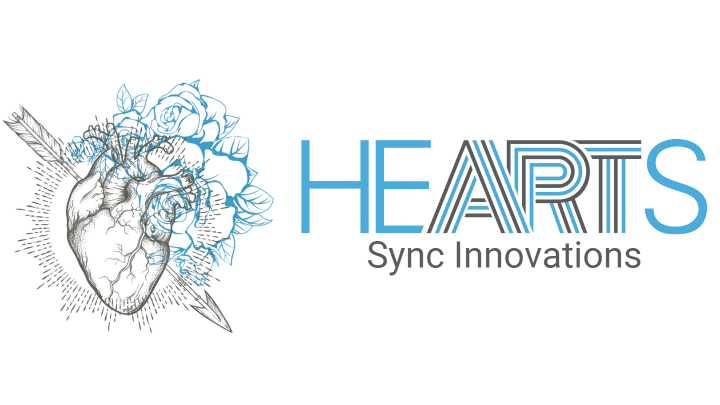Creativity is akin to a traffic jam during rush hour: all the resources are there – engine, road, destination – but nothing is moving. Instead of pressing on the gas, a lane change often helps. This article presents surprising, scientifically-supported ways to shift mental gears and elegantly resolve creative blockages – leading to a greater flow of ideas, focus, and performance energy.
Creative blockages arise when the brain gets stuck between two operational modes: the Default Mode Networkbrain network for free association, self-reflection, "daydreaming" and the Executive Control Networknetwork for planning, focus, and cognitive control. Optimal idea flow requires flexible switching – a kind of neural transmission. Stress, sensory overload, and rigid routines jam this transmission. Unconventional yet deliberately employed practices such as mindfulness, movement, and improvisational arts tackle precisely this: they relieve the attentional system, enhance cognitive flexibility, and reactivate reward circuits that promote creative exploration. For high performers, this means that creativity is not a mystical spark but a trainable neurodynamics.
Reducing creative blockages yields more than just ideas: mental strain decreases, stress physiology calms, and cognitive resources are freed up. Studies show that meditation reduces stress and makes information processing more efficient, which lowers errors and stabilizes performance [1]. Mindfulness programs also reduce perceived stress and improve cognitive flexibility – a key driver for problem-solving under pressure [2]. Physical activity correlates with real creative behavior in daily life, not just with test performance – individuals who sit less and engage in moderate to intense physical activity more frequently embark on creative projects [3]. Moreover, improvisation activates reward and control networks, simultaneously nourishing motivation, flow, and cognitive regulation – a neurobiological antidote to mental rigidity [4].
Mindfulness interventions show differentiated effects: A brief mindfulness practice improved sustained attention and inhibitory control in an experimental comparison, reduced mind-wandering, and accelerated reaction times. Interestingly, convergent thinking in rebus tasks did not benefit – an indication that brief mindfulness strengthens attention regulation rather than directly improving specific problem-solving formats [5]. Extended mindfulness breathing meditation over four weeks reduced perceived stress and increased cognitive flexibility in daily life, was highly accepted, but required commitment for sustainable adherence – a realistic view of efficacy and feasibility [2]. Concurrently, jazz improvisation in fMRI highlights the neural signature of spontaneous creativity: as improvisational freedom increases, reward systems, auditory-motor areas, the right insula, and – at the height of freedom – Default Mode, Executive Control, and language networks come together prominently. Creativity emerges not from a single module but from the coordinated dynamics of several networks that link planning, decision-making, and fine motor control [4]. Finally, field research connects movement with everyday creativity: less sitting and more moderate to intense activity are associated with more frequent creative activities; habitually active individuals also report independently more creative projects and successes – a transfer from physical to cognitive agility [3].
- Establish a daily meditation routine (10–12 minutes, consistent time). Focus on breathing or body sensations; use a timer. Goal: reduce stress levels and strengthen cognitive flexibility – effects are demonstrated in controlled studies [1] [2].
- Integrate "Walking-Think" sessions: 15–30 minutes of brisk walking without music, centered around a guiding question (e.g., “What three unconventional ways can solve X?”). Immediately afterward, note down two actionable steps. Habitually higher activity is associated with more tangible creative actions [3].
- Practice improvisational art weekly (music, theater, sketches). Set 3×5 minutes of “Free Impro” without evaluation, followed by 5 minutes of targeted variation. Improvisation activates reward and control networks and promotes spontaneous ideation [4].
- Utilize micro-mindfulness throughout the day: 60 seconds of “3 breaths + body scan” before challenging cognitive tasks. Short formats improve attentional regulation and dampen mind-wandering – ideal for breaking through thinking jams [5].
Creative ease is trainable: less stress, more flexibility, activated reward systems. Start today with 10 minutes of meditation, a clear-minded walk, and 5 minutes of improv – small levers, big impact. Shift to high-performance creativity every day.
This health article was created with AI support and is intended to help people access current scientific health knowledge. It contributes to the democratization of science – however, it does not replace professional medical advice and may present individual details in a simplified or slightly inaccurate manner due to AI-generated content. HEARTPORT and its affiliates assume no liability for the accuracy, completeness, or applicability of the information provided.













